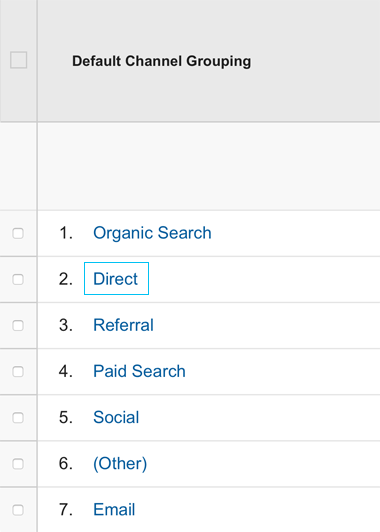Fifty-six percent of businesses rely solely on Google Analytics (GA) to track their web metrics. And this isn’t just because it’s free. GA is one of the best and easiest tools to use to measure performance metrics like total number of unique visitors, most popular pages and traffic sources. GA also offers ecommerce data including average order value, top products, cart abandonment rate, and many other metrics.
But if your business lives exclusively online like so many ecommerce retailers these days, you might want to listen up; as there are a number of insights GA can’t provide.
Here are the top insights Google Analytics won’t provide about your ecommerce site.
Individual-user analytics
Seeing exactly who visits your site, whether it’s a high-spending individual customer or a competitor’s ecommerce director, would make your marketing strategy much easier. However, GA’s privacy policy is to not collect personally identifiable information like IP address, email address, name and more secure information like credit card number.
In addition to its legal policy, there’s a technical reason GA doesn’t provide individual user data. GA presents data in aggregate. Especially for sites with high traffic volume in order to deliver metrics speedily, GA uses data sampling to generate its results.
To sidestep this issue, Google Tag Manager can help by generating unique IDs for each user that will track their movements throughout your site. You’ll get a more authentic picture of what a shopper’s journey looks like and insights into their specific behavior.
Why a shopper completed an action
GA can tell you when someone makes a purchase or fills out your preference center form, but that doesn’t help you answer an important question: Why?
The best way around this conundrum is to view referral and campaign sources. It can help you infer that an email discount, for example, drove a shopper to make a purchase.
But a properly-executed on-site or post-purchase survey can help you get more information from your customers and uncover the why (or, importantly, the why not). To encourage customers to complete surveys, offer discounts or incentives to gather more responses.
How customers shop on other channels
Just like when shoppers place orders by phone or shop in-store, knowing the factors that led to their offline purchase decisions can be tricky. The same goes for GA. As robust as it is, GA doesn’t directly integrate with in-store sales data, forcing marketers to again speculate what their shoppers do away from the computer.
If your shoppers can place orders by phone or shop in-store, for example, it’s hard to see how their online behavior affects their offline. GA doesn’t directly integrate with in-store sales data, forcing marketers to again speculate what their shoppers do away from the computer.
Historical or fixed data
GA requires tracking codes to be placed on each site page to record and provide data about visitor behavior. If these codes aren’t added properly, you can’t record or view data. If you’re making campaign changes often or fail to correctly tag a campaign link or page, your data will be skewed.
If you don’t add the right tracking code to a campaign page and then notice your bounce rate is zero, you’d likely raise an eyebrow before suspecting something is wrong. But even after you fix the tracking, you’ll still only be able to see accurate reporting going forward because GA fixes are not retroactive.
Likewise, any time a shopper returns an item, GA does not update your revenue report data to reflect the lost sale. Inflated sales data could lead to major miscalculations. GA also views your gift card sale and redemption as two separate transactions, which can mislead your marketing team, especially following the holiday season or a successful promotion.
Videos, documents and other non-web files
Ecommerce businesses are incorporating videos into product views and featuring them throughout their sites more than ever, whether for customer-uploaded content, stylist tips, etc. Unfortunately, the JavaScript code GA uses for tracking only applies to webpages and doesn’t track non-web files (including videos and PDFs). It can be difficult to track how shoppers are engaging with this content unless you use a work-around.
If you’re featuring videos on your site, you must add click-tracking to record when shoppers play the video. If you’re embedding videos on your site, you can create a unique code and set up a Custom Event in GA to track when the video is played, paused or finished to help you gain further insight about user interaction with these non-web files.
Private sessions or JavaScript/cookie-disabled browsers
As mentioned, GA tracks users by recording data through JavaScript code snippets implemented on the front-end of your site. If JavaScript or cookies are disabled, actions taken during that web session won’t be recorded. The same goes for sessions completed in a private browser. This means that if a lot of your shoppers use private sessions, your GA traffic will report lower than in reality.
The full picture of “direct” traffic
By using GA, you might think you’re getting a detailed report of who visits your site and where they come from. Unfortunately, under the Traffic Channel report, you’ll likely see a considerable amount of traffic that comes from a “direct” source. It’s a common misconception that “direct” traffic is solely comprised of visitors that made their way to your site by entering your URL directly into the search bar. While that does make up a portion of “direct” traffic, this traffic also comes from referral sources that GA can’t identify, such as clicking a bookmarked link, a link in a document, or even links in certain emails. It could also be a result of security settings that prevent the referring URLs to pass through another site.
To better determine the true source of this traffic, you could look at shoppers’ time on site and new versus returning visitors to paint a likelier picture of their point of entry. Longer time-on-site metrics or more return visits could truly mean your users have your site bookmarked or type the URL directly.
Keyword data from organic searches
Once upon a time, you could see what keyword users searched for to land on your site. However, Google now encrypts searches using SSL for shoppers logged into their Google accounts. Organic keyword searches (often up to 90 percent of those searches) may be listed as “not provided” in your organic keyword report. Google claims they made this move to protect users’ privacy. However, if you’re a paying Google AdWords customer, organic keyword reports are recorded and accessible via Google’s Search Console.
Conclusion
GA provides a wealth of knowledge far beyond just traffic data. If used properly, it will show how shoppers arrive on your site and what they do when they get there. However, there are still some critical holes in the data it provides which in return, can paint an inaccurate picture of your site and increase the difficulty in making concrete business decisions off of the information.
To get the most accurate understanding of how your site is performing, it’s best to use several web and ecommerce analytics tools and not rely solely on GA (or any one tool for that matter!) for your information.
Cheryl Amaya is Client Success Manager for WebLinc

